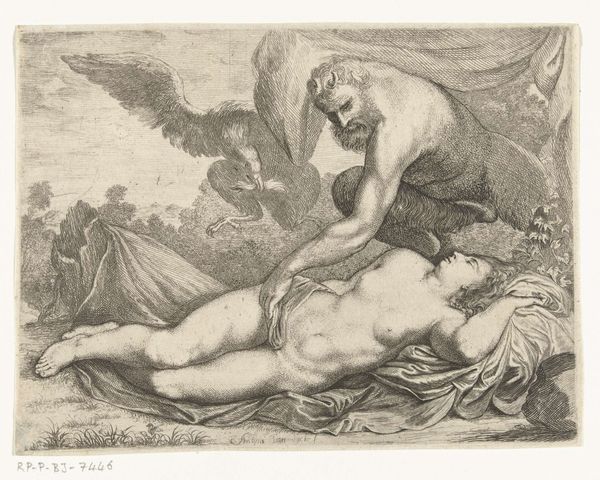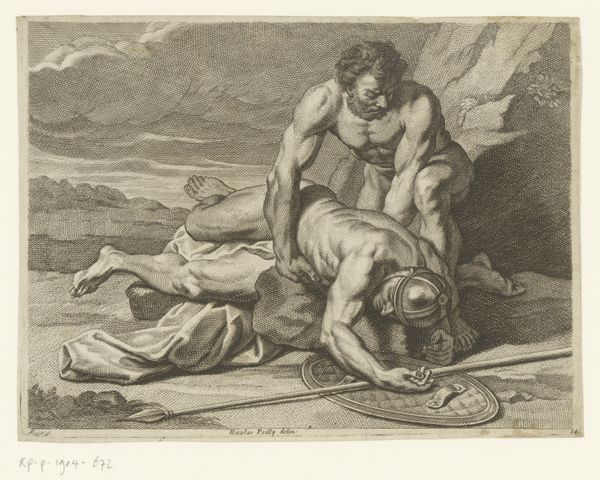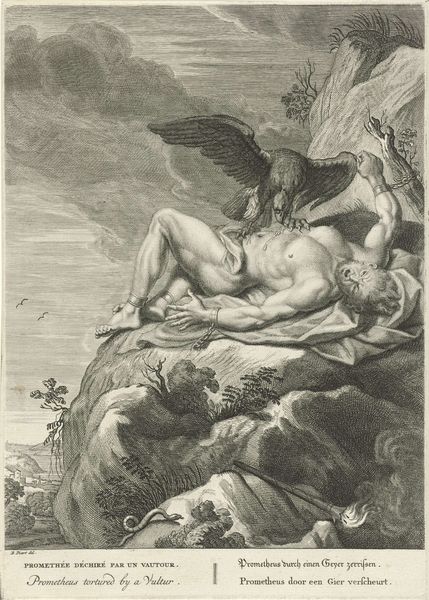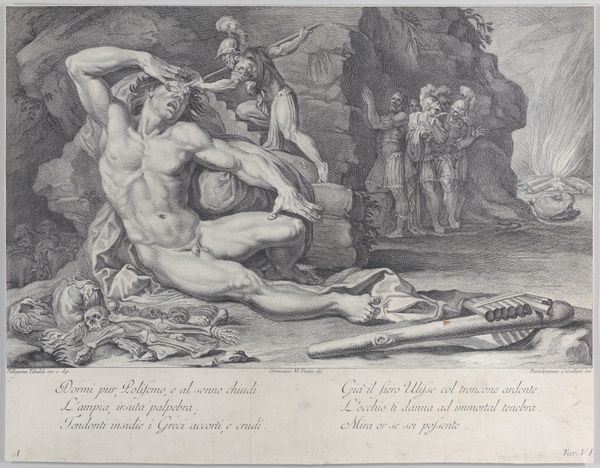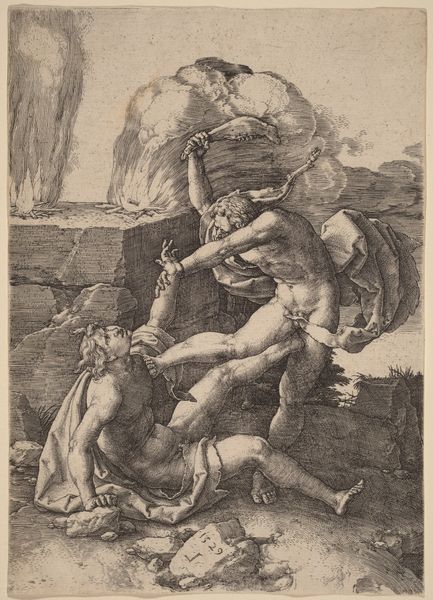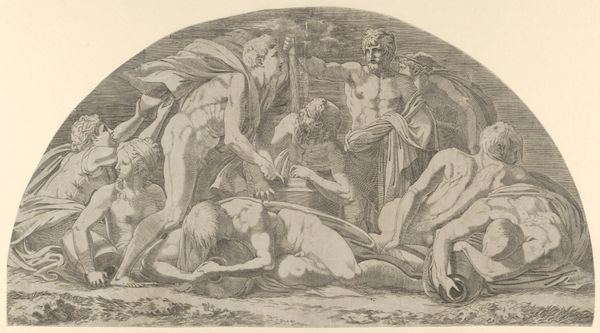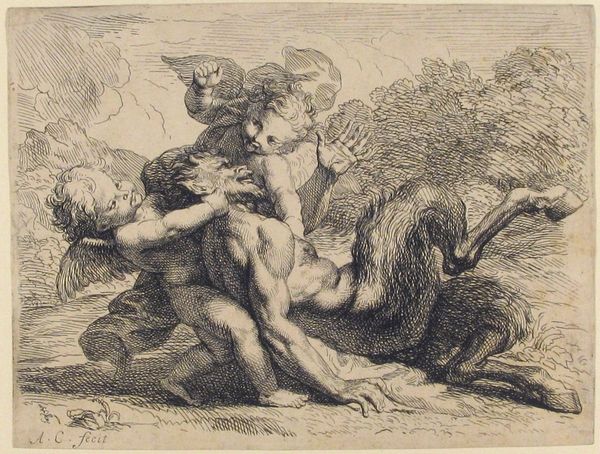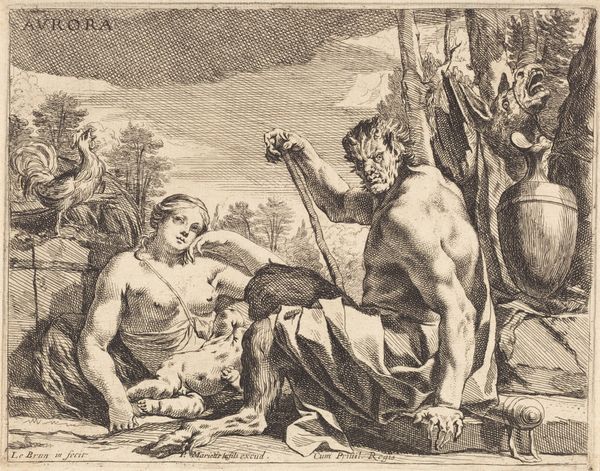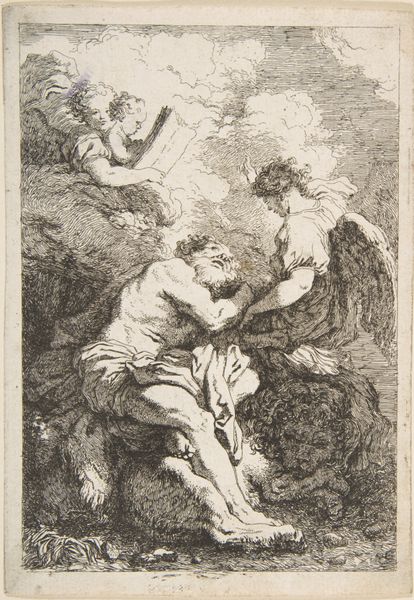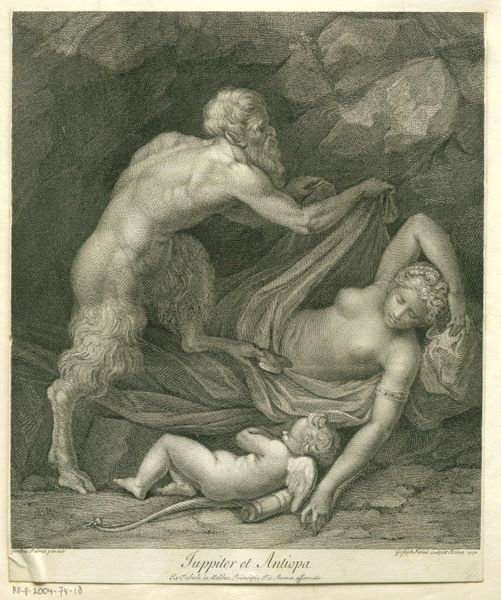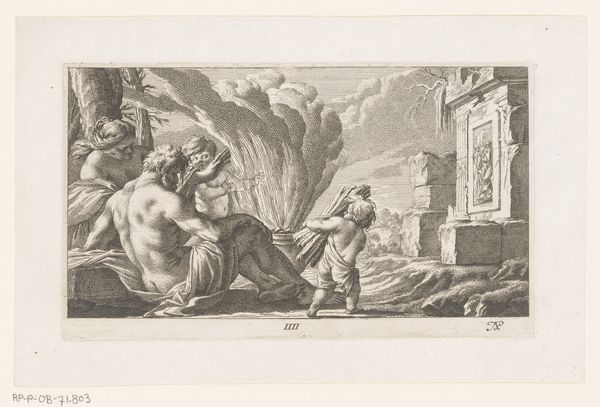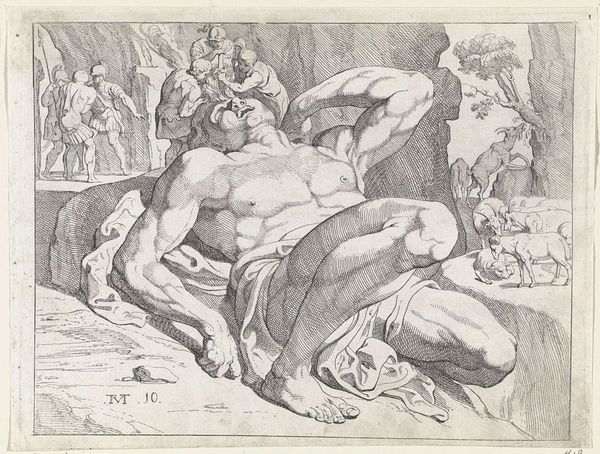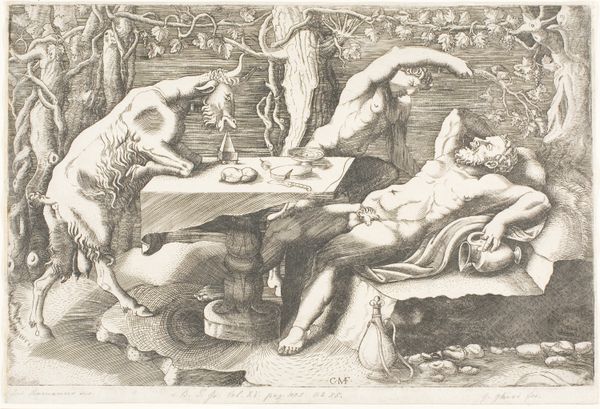
print, engraving
#
baroque
# print
#
classical-realism
#
figuration
#
line
#
history-painting
#
engraving
Dimensions: plate: 18.8 x 23.5 cm (7 3/8 x 9 1/4 in.) sheet: 19.4 x 24.4 cm (7 5/8 x 9 5/8 in.)
Copyright: National Gallery of Art: CC0 1.0
Curator: This intriguing engraving, dating from around 1640, is entitled "Nox (Night)" and it’s by Charles Le Brun. The artwork presents a nocturne with figures set against a dramatic backdrop. What is your initial reaction to this composition? Editor: There's a palpable tension created by the dramatic chiaroscuro. The heavy, dark lines against the stark white of the paper amplify the drama, making it feel quite theatrical. The figures are strikingly rendered. Curator: The composition draws heavily from the prevailing classical-realism style and the subject positions itself within traditional historical painting. The allegory of Night, however, opens avenues for feminist readings: her traditionally masculine posture contrasts with her vulnerability shown here, supine on the earth and dependent on male figures around her for support or security. Editor: You know, my first thought was not about the social and political contexts. Rather, how the distribution of light affects the organization of forms: The almost theatrical lighting accentuates the musculature and dramatic pose of the foreground figure and contrasts the figures lurking in darkness. This builds a visual rhythm that draws you across the scene. I suppose what really stands out to me is how the artist plays with form and the balance across the image. Curator: I think Le Brun is making a conscious comment about the patriarchal dynamics of his time by presenting Night in a moment of human vulnerability, stripping her of any inherent power or authority. Is the use of line creating patterns of repression and control? What about the very absence of pigment that speaks to lack, darkness and erasure? Editor: That’s an interesting point. And maybe a bit overstated. Perhaps it's also simply a study in contrasts—light and shadow, strength and vulnerability—that Le Brun uses to construct a dynamic visual field, which has an emotional rather than an explicit sociopolitical core. Curator: Perhaps both? We often limit our reading of early art by confining interpretation to binaries when art and the culture that generates it operates along so many more spectrums. Thanks to this image, we’ve now modeled intersectional dynamics, too! Editor: Yes, precisely. Perhaps through these visual conversations with Le Brun, we gain a more multifaceted comprehension.
Comments
No comments
Be the first to comment and join the conversation on the ultimate creative platform.
